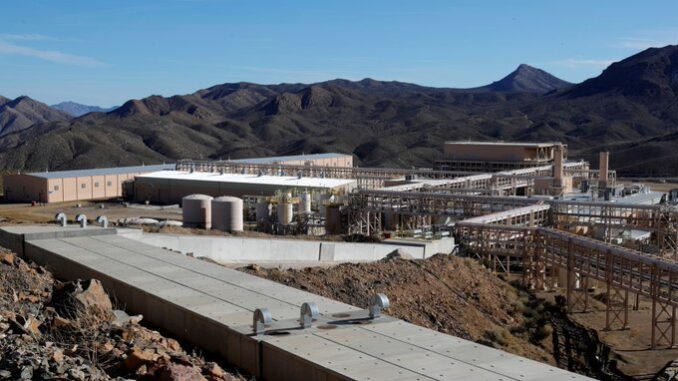
In a move that underscores the escalating tensions in global trade, China has announced expanded export restrictions on rare earth elements and other critical minerals. Effective from December 1, 2025, for materials and immediately for technologies and labor, these measures extend controls beyond raw materials to include intellectual property, extraction technologies, and even barring Chinese citizens from unauthorized overseas mining activities.
This development comes just weeks before a potential meeting between U.S. President Donald Trump and Chinese President Xi Jinping at the Asia-Pacific Economic Cooperation (APEC) forum in Gyeongju, South Korea, later in October 2025.
Analysts view this as a strategic bargaining chip by Beijing to pressure Washington amid ongoing trade negotiations.
The restrictions target products containing more than 0.1% domestically sourced rare earths, as well as technologies for refining, magnet-making, and recycling.
Exports intended for military applications, advanced semiconductors, or AI with potential defense uses will face case-by-case reviews, with denials for entities linked to foreign militaries or on watch lists.
China, which controls about 70% of global rare earth supply, aims to prevent “misuse” in sensitive sectors while advancing its own industries up the value chain.
Implications for Investors
For investors, China’s tightened grip on critical minerals presents both risks and opportunities. Shares of U.S. rare earth miners like MP Materials, Lithium Americas (LAC), and Trilogy Metals (TMQ) surged following the announcement, reflecting heightened demand for non-Chinese sources.
Dysprosium prices have tripled, and U.S. rare earth shipments from China dropped 93% post-announcement, signaling potential supply shortages that could drive up prices for related commodities.
However, the move threatens volatility in sectors reliant on these minerals, such as defense, automotive, and semiconductors.
Investors in companies tied to Chinese supply chains may face disruptions, with European firms already reporting millions in losses due to inconsistent approvals.
Tax Burden in 2025?
On the flip side, this could boost investments in diversified suppliers, including U.S.-based projects, as governments prioritize domestic production.
As one X user noted, these restrictions play into U.S. government hands, potentially skyrocketing equity in American mining industries and strengthening the dollar. @juliajeler
Market Impacts
The broader market is already feeling the ripple effects. Rare earths are essential for high-tech industries, including electric vehicles, defense systems, and renewable energy technologies.
The restrictions are expected to disrupt global supply chains, particularly in defense-related exports, leading to uneven progress in recovery and potential production stoppages.
This could deepen dependencies on Chinese know-how, exacerbating vulnerabilities exposed by U.S.-China trade frictions.
Market volatility is anticipated, with threats to stocks in affected sectors.
While a transition period may cushion short-term blows, long-term shifts could inflate costs for end-users, from automakers warning of factory shutdowns to broader economic pressures.
Silver, recently added to the U.S. critical minerals list, is being stockpiled, indicating preparations for similar escalations.
Trump’s Plans for Bolstering U.S. Critical Minerals Supply Chain
The Trump administration has been proactive in addressing U.S. vulnerabilities to Chinese dominance in critical minerals. Key initiatives include:
Investments and Stakes: The White House is investing $35.6 million in the Upper Kobuk Mineral Projects (UKMP) in Alaska and taking a 10% stake in projects like Ambler Mining District to unlock resources and reduce dependence on China. We covered this on the Energy News Beat Daily Show.
Reversing Blocks and Streamlining Permits: Reversing Biden-era restrictions on Alaskan projects and adding five critical mineral production projects to the Federal Permitting Improvement Steering Council for faster approvals.
Funding Opportunities: The Department of Energy announced nearly $1 billion in funding to advance domestic supply chains.
Executive Actions: Immediate measures under the Federal Land Policy and Management Act to prioritize mineral production, and expanding the 2025 draft list to 54 critical minerals.
Broader Strategy: Focus on national security, including equity stakes in companies like Lithium Americas (5% by DoE), and using tariffs under Section 232 to protect domestic mining.
These efforts aim to build resilience against disruptions like China’s latest restrictions, though challenges remain in fully decoupling from Beijing’s supply dominance.
As trade talks loom, the administration’s push could gain momentum, potentially leading to concessions or further escalations.
In summary, China’s export curbs heighten geopolitical stakes, offering investors a chance to pivot toward U.S. and allied suppliers while navigating market turbulence. The Trump administration’s initiatives provide a counterbalance, but their success hinges on swift implementation amid potential U.S.-China dialogues.
Tax Burden in 2025?
Crude Oil, LNG, Jet Fuel price quote
ENB Top News
ENB
Energy Dashboard
ENB Podcast
ENB Substack







